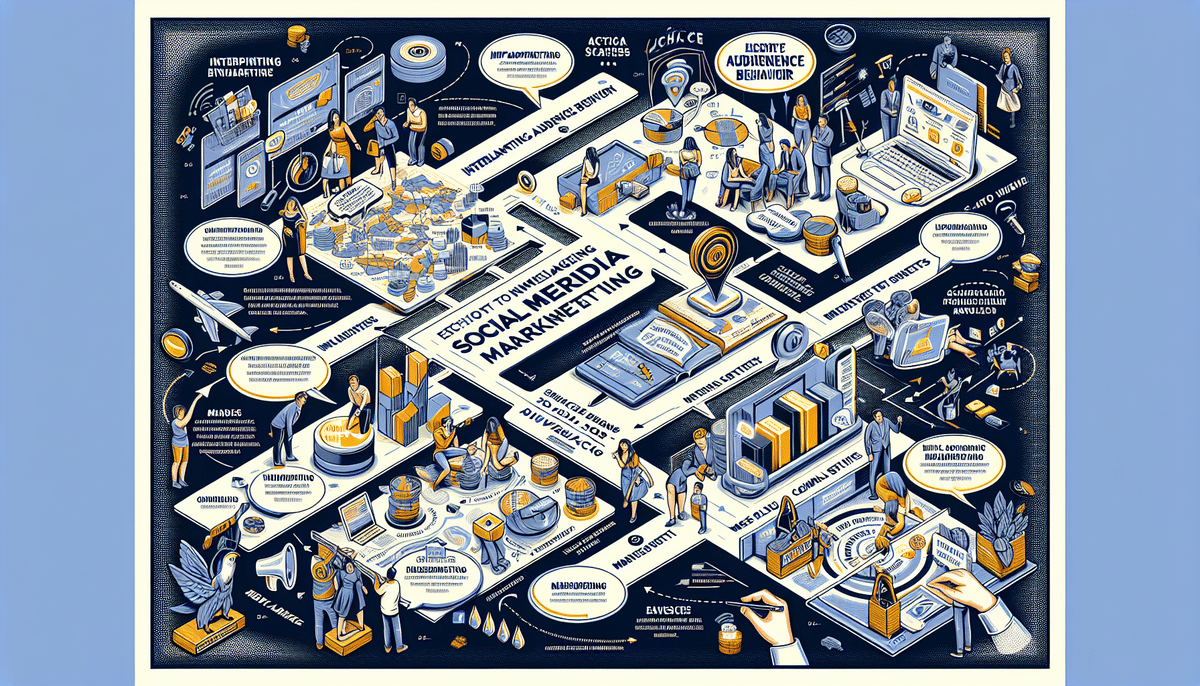Navigating the Impact of COVID-19 on eCommerce: Key Trends and Strategies
The COVID-19 pandemic has fundamentally transformed the eCommerce landscape, altering consumer behaviors and forcing businesses to adapt rapidly. With online shopping becoming a primary mode of consumption, understanding the latest trends and implementing effective strategies is crucial for businesses to thrive in this evolving environment. This article delves into the key trends shaping eCommerce post-pandemic and offers strategies to navigate the challenges effectively.
The Latest eCommerce Trends You Need to Know
1. The Rise of Social Commerce
Social commerce continues to gain momentum, driven by increased social media usage during the pandemic. Platforms like Instagram, Facebook, and TikTok have integrated shopping features, enabling seamless purchasing experiences directly within the social apps. According to a Statista report, global social commerce sales are projected to reach $604 billion by 2027, up from $89.4 billion in 2021.
Businesses must integrate social commerce into their strategies to leverage this growing trend. Utilizing influencers, shoppable posts, and targeted advertising can enhance visibility and drive sales.
2. Personalization in Online Shopping
Personalization remains a critical factor in enhancing the online shopping experience. Customized recommendations based on browsing history, purchase behavior, and demographic data can significantly boost conversion rates. A Forrester study found that 74% of consumers feel frustrated when website content is not personalized.
Investing in advanced personalization tools and leveraging machine learning algorithms can help businesses deliver tailored experiences, fostering customer loyalty and increasing repeat purchases.
3. Contactless Payment Options
The demand for contactless payment solutions has surged as consumers prioritize safety and convenience. Methods such as digital wallets (e.g., Apple Pay, Google Wallet) and Buy Now, Pay Later (BNPL) services have become increasingly popular. According to Nielsen's research, BNPL services saw a 50% increase in usage in 2022.
Offering a variety of contactless payment options can enhance the checkout experience, reduce cart abandonment rates, and cater to diverse customer preferences.
4. Sustainability in eCommerce
Environmental consciousness among consumers is driving demand for sustainable practices in eCommerce. Businesses adopting eco-friendly packaging, sustainable sourcing, and carbon-neutral shipping options can attract environmentally aware customers. A IBM study indicates that 57% of consumers are willing to change their purchasing habits to reduce environmental impact.
Implementing sustainability measures not only aligns with consumer values but also enhances brand reputation and compliance with evolving regulations.
5. Mobile Optimization
With over 70% of eCommerce traffic originating from mobile devices, optimizing websites for mobile is imperative. Mobile-friendly designs, fast loading times, and intuitive navigation are essential for retaining mobile users. According to Webflow, mobile commerce sales are expected to account for 54% of total eCommerce sales by 2024.
Ensuring a seamless mobile shopping experience can significantly boost user engagement and conversion rates.
Navigating Shipping Challenges in Today's World
1. The Impact of COVID-19 on Shipping
The pandemic caused unprecedented disruptions in global shipping, including port closures, labor shortages, and supply chain bottlenecks. These challenges resulted in longer shipping times and increased costs. A BBC report highlighted that container shipping rates surged by over 250% during the peak of the pandemic.
Businesses must collaborate closely with shipping partners to anticipate disruptions and adapt their logistics strategies accordingly.
2. Strategies for Managing Shipping Delays
Managing shipping delays is crucial for maintaining customer satisfaction. Strategies include setting realistic delivery expectations, offering multiple shipping options, providing real-time tracking updates, and maintaining transparent communication. Implementing these practices can mitigate the negative impact of delays.
Referencing resources from industry leaders like Shopify can provide actionable insights for optimizing shipping processes.
3. The Importance of Accurate Tracking Information
Providing accurate and timely tracking information enhances transparency and builds customer trust. Automated tracking systems can offer real-time updates on shipment status, expected delivery dates, and any unforeseen changes. According to PwC's Consumer Intelligence Series, 73% of consumers consider real-time tracking as essential to their purchase experience.
Integrating robust tracking solutions can improve customer satisfaction and reduce inquiries related to order status.
4. Sustainable Shipping Practices
Adopting sustainable shipping practices is not only environmentally responsible but also resonates with eco-conscious consumers. Practices include using recyclable packaging materials, optimizing delivery routes to reduce carbon emissions, and partnering with carriers committed to sustainability. Implementing these measures can differentiate a brand and meet growing consumer demand for green logistics.
Mitigating the Impacts of Shipping Disruptions
1. Streamlining Your Supply Chain
Optimizing supply chain management is vital for resilience against shipping disruptions. Strategies include diversifying suppliers, maintaining optimal inventory levels, and leveraging technology for better supply chain visibility. According to McKinsey & Company, resilient supply chains can mitigate up to 70% of disruption impacts.
Collaborating with reliable suppliers and investing in advanced supply chain management systems can enhance overall efficiency and adaptability.
2. Improving Your Shipping and Delivery Processes
Enhancing shipping and delivery processes involves adopting smart routing, dynamic delivery optimization, and automated tracking systems. These improvements can reduce delivery times and increase reliability. Tools like LateShipment.com offer solutions for tracking packages, managing customer communications, and streamlining shipping workflows.
Implementing such technologies can lead to more efficient operations and better customer experiences.
3. Enhancing Your Customer Service Experience
Exceptional customer service is paramount in mitigating the effects of shipping disruptions. Providing timely updates, offering proactive solutions, and maintaining open lines of communication can reassure customers during delays. According to Salesforce's State of Service Report, 84% of customers say that being treated like a person, not a number, is essential to winning their business.
Investing in robust customer service infrastructure ensures that customers feel valued and informed throughout their purchasing journey.
4. Diversifying Your Shipping Options
Relying on a single carrier or shipping method can increase vulnerability to disruptions. Diversifying shipping options by partnering with multiple carriers and offering various delivery methods (e.g., same-day, next-day, standard) can spread risk and enhance reliability. This approach ensures that even if one carrier faces issues, others can maintain service continuity.
5. Monitoring Industry Trends and News
Staying informed about industry trends and global events that may impact shipping is essential for proactive disruption management. Subscribing to industry publications, attending webinars, and participating in professional networks can provide valuable insights. For instance, monitoring port activity reports or labor market trends can help anticipate potential shipping delays and adjust logistics strategies accordingly.
Enhancing Customer Experience in eCommerce
1. Omnichannel Integration
Creating a seamless shopping experience across multiple channels—online, mobile, and in-store—can significantly enhance customer satisfaction. Implementing omnichannel strategies ensures consistency in branding, inventory management, and customer interactions. A Forbes article emphasizes that businesses with strong omnichannel strategies retain 89% of their customers compared to 33% without.
Leveraging unified commerce platforms can facilitate smoother transitions for customers across different platforms, enhancing their overall experience.
2. Leveraging Customer Feedback
Actively seeking and utilizing customer feedback helps in understanding customer needs and improving services. Implementing feedback mechanisms such as surveys, reviews, and social listening can provide actionable insights. According to Help Scout, 70% of consumers are more likely to purchase from a brand that actively solicits and acts on customer feedback.
Incorporating feedback into business strategies leads to continuous improvement and stronger customer relationships.
Leveraging Technology for eCommerce Success
1. Artificial Intelligence and Machine Learning
AI and machine learning technologies are revolutionizing eCommerce by enabling advanced personalization, predictive analytics, and efficient inventory management. These technologies can analyze vast amounts of data to predict trends, optimize pricing, and enhance customer interactions. A IBM report states that businesses using AI can improve their operational efficiency by up to 40%.
Integrating AI-driven solutions can provide a competitive edge by enhancing decision-making and automating routine tasks.
2. Augmented Reality (AR) and Virtual Reality (VR)
AR and VR technologies offer immersive shopping experiences, allowing customers to visualize products in their environment before making a purchase. For example, furniture retailers use AR to show how a piece would look in a customer's home. According to Statista, the adoption of AR in eCommerce is expected to grow, with projections reaching $100 billion by 2023.
Implementing AR and VR can reduce return rates and increase customer satisfaction by providing a more interactive and informed shopping experience.
3. Automation and Robotics
Automation in warehousing and fulfillment centers enhances efficiency and accuracy in order processing. Robotics can handle tasks such as picking, packing, and sorting, reducing human error and increasing speed. A Forbes article highlights that automation can lead to a 25% increase in warehouse efficiency.
Adopting automation technologies can streamline operations, lower costs, and improve order fulfillment times.
4. Blockchain for Supply Chain Transparency
Blockchain technology provides transparent and immutable records of transactions, enhancing supply chain transparency and security. It allows businesses and consumers to trace the origin and journey of products, ensuring authenticity and ethical sourcing. According to Business Insider, blockchain can reduce supply chain fraud by up to 80%.
Implementing blockchain can build trust with consumers and streamline compliance with regulatory standards.
Conclusion
The COVID-19 pandemic has accelerated the transformation of the eCommerce industry, highlighting the importance of adaptability and innovation. By embracing the latest trends—such as social commerce, personalization, and sustainable practices—and implementing effective strategies to manage shipping challenges, businesses can enhance customer experiences and maintain a competitive edge. Leveraging advanced technologies like AI, AR, and blockchain further empowers businesses to optimize operations and meet evolving consumer expectations.
Investing in comprehensive solutions can streamline shipping processes, improve customer communication, and mitigate disruptions, ensuring long-term success and customer loyalty in the dynamic eCommerce landscape.








